Yesterday, I received my Sangean DT-160CL–the correctional version of the DT-160–from Amazon. 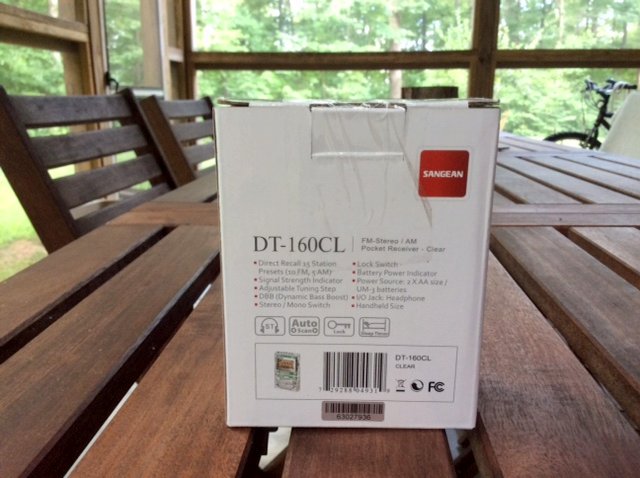
Even though the Amazon product page showed 5 units in stock on July 29, and though I get free two day shipping via Amazon Prime, my DT-160CL took four business days to arrive. Out of curiosity more than anything else, I asked Amazon why the delivery would take four business days instead of two my Prime membership promises.
Amazon replied that stock levels weren’t correctly displayed on the product page at time of ordering since the DT-160CL was selling so quickly.
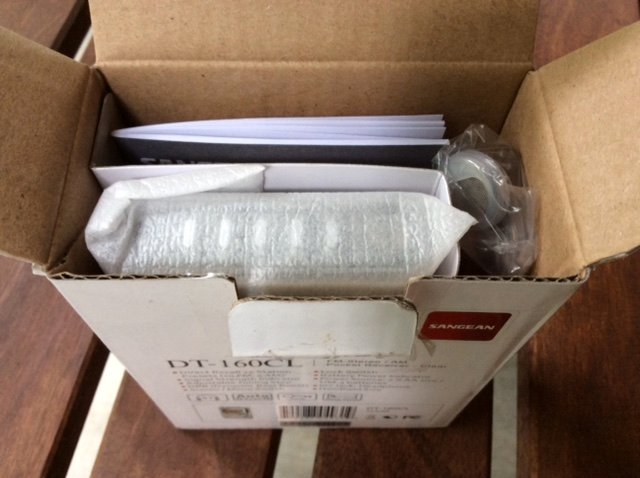
Amazon apologized for the confusion and–though I wasn’t seeking one at all–they issued a $10 credit! Wow–thanks, Amazon!
The DT-160CL is supplied with a set of clear earbuds, an owner’s manual and a warranty card.
The Sangean DT-160CL is very close in size to the venerable Sony SRF-39FP–the SRF-39FP has slightly more depth and a little less height.
The DT-160CL’s clear case, while sturdy, feels marginally more supple than that of the Sony SRF-39FP. Though I haven’t been able to confirm, the DT-160CL chassis feels like a polypropylene product while the SRD-39FP feels like polycarbonate. From the photos above, one can see that the DT-160CL’s case is a touch more opaque/cloudy than that of the SRF-39FP.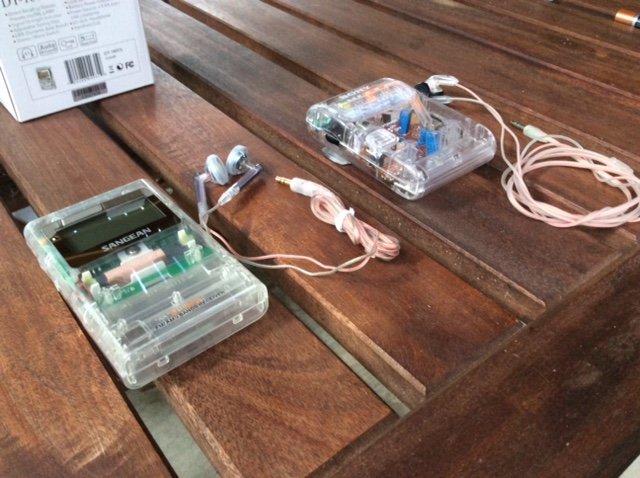
Endurance test
Other than overall receiver performance, I’m very interested in battery performance since Sangean touts a 100 hour run time on two AA batteries (for the DT-160 series).
Having used the Sony SRF-39FP for a few years, I can attest to an incredibly long battery life as well. No doubt, those purchasing the DT-160CL for use in a correctional facility place a lot of value on battery performance.
I stopped by our local CVS pharmacy to purchase fresh alkaline batteries for both radios. CVS had a sale on their own (generic) version of the Duracell Quantum alkaline batteries. I purchased a set and popped them in both radios.
The DT-160CL has a hinged battery cover and holds two AA cells.
The SRF-39FP only needs one AA battery.
After plugging in the supplied clear ear buds, I turned both radios on and adjusted the volume to a comfortable, moderate listening level.
I matched the audio levels for both units and tuned to my favorite classic rock FM station: WXRC 95.7 MHz.
WXRC is a fantastic benchmark FM station as it’s about 130 miles away (as the crow flies), but has an exceptional propagation footprint. My best FM receivers, when ideally-placed in my home, and telescoping antenna fully-extended, can receive WXRC in stereo lock with no interference.
I’m happy to report that both the DT-160CL and the SRF-39FP can receive WXRC quite easily when I’m holding the unit in my hand and standing in a part of my house where the signal is strongest.
In truth, I didn’t have time to evaluate receiver performance last night–I was more eager to begin the endurance test which, by the way, officially started yesterday (August 3, 2016) at 22:30 UTC.
I can’t wait to discover which radio will win!
Follow this review thread by bookmarking the following tag: Sangean DT-160CL v Sony SRF-39FP

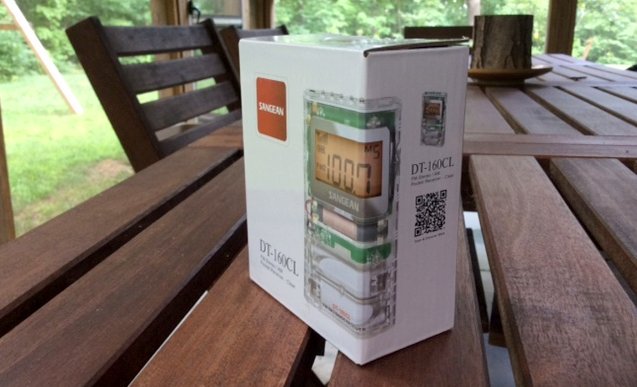
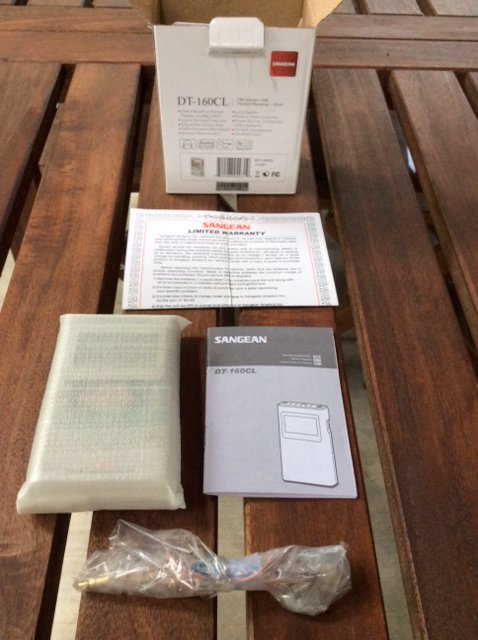
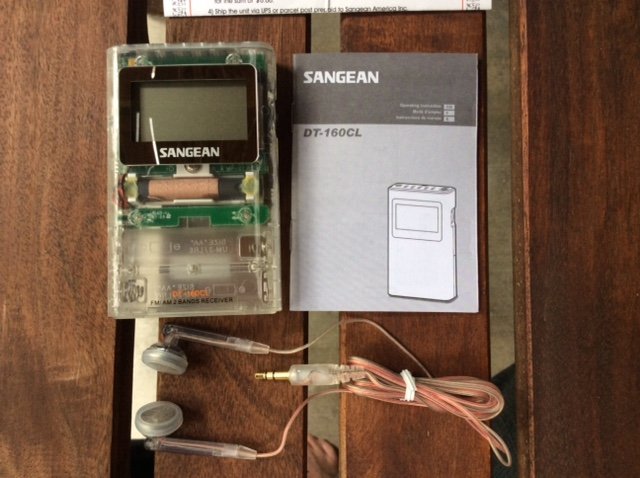
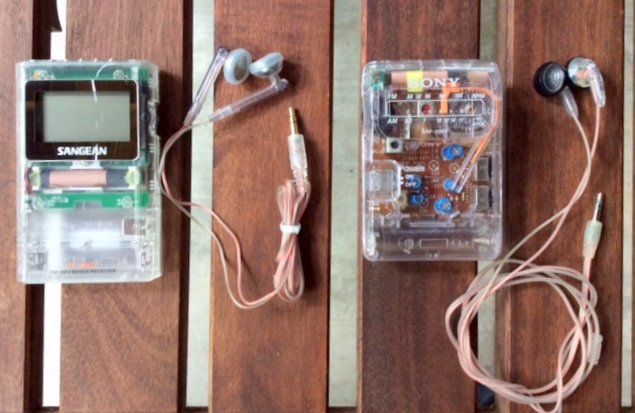
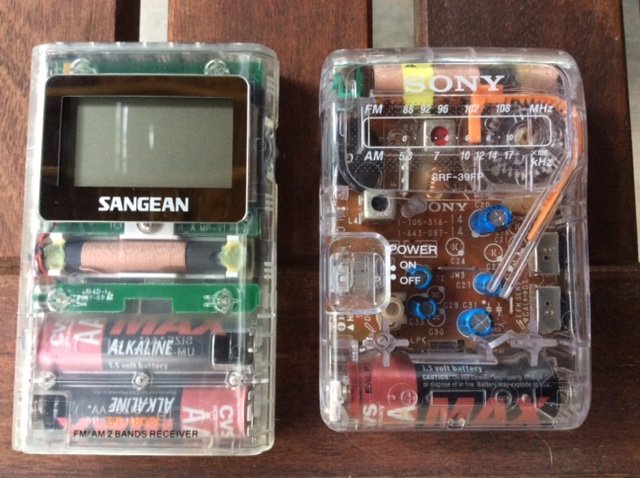
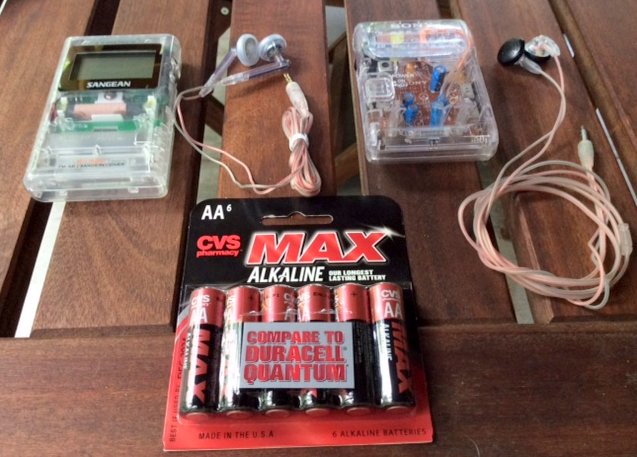
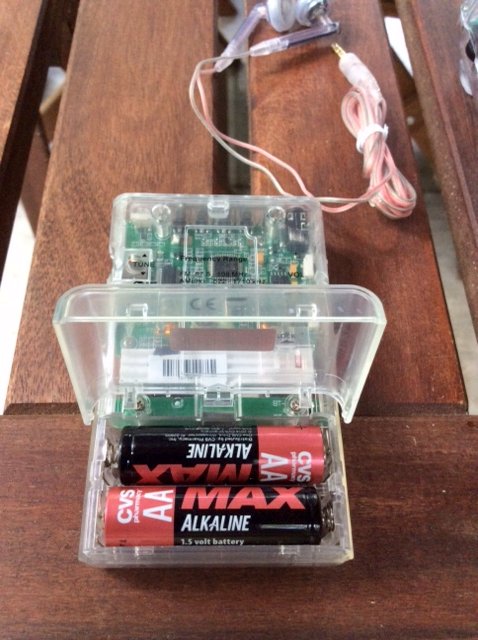
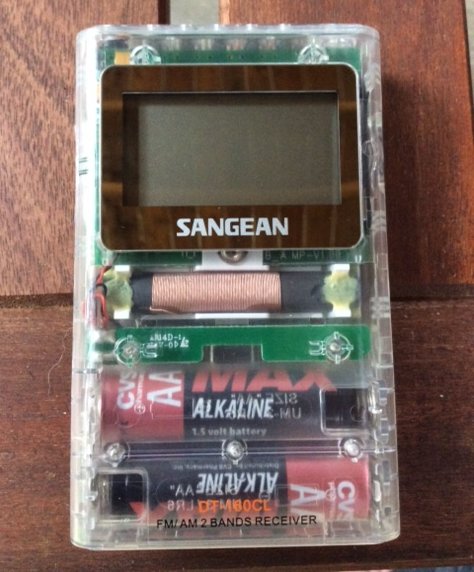
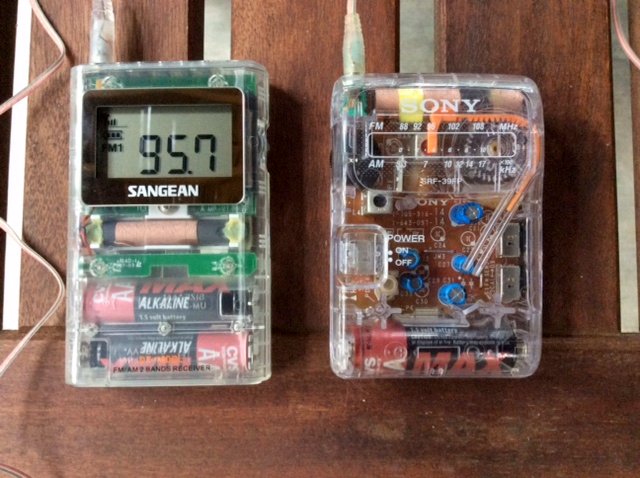
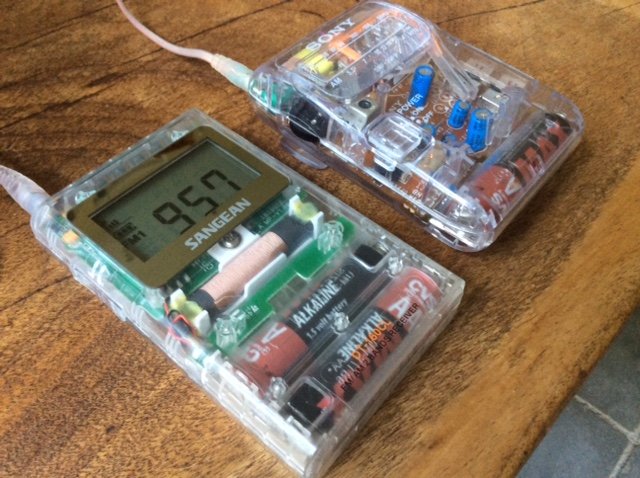
Excellent work, without going to jail, I was very lucky in getting a new in the box Sony SRF-39FP I replaced the original headphones for a Soundmagic PL-30 and the sound it is excellent on FM.
I did not buy it for FM purposes, my main interest it is MW stations and sensitivity and selectivity it is top.
I miss a display because most times I do not know where I am so I had a look to the Sony SRF-T615.
I would be very grateful if you could make a serious test on MW band. I think that most of us use these ultralight receivers on that mode.
I would bet that the Sony beats it in weak signal identification, or maybe I am wrong.
I wait your review, if Sangean outperfoms the Sony I will buy one.
Regards.
I’ll certainly check MW performance, Carlos, and report back!
I’m looking forward to the results of this correctional radio shoot-out. A photo of the two radios in the battery endurance test location would be interesting. How were the earbud cables (the FM antennas) oriented? Were they adjusted for maximum signal for each radio?
Was voltage checked on each cell prior to battery installation? I’m having fun with this. AA alkaline batts will typically show more than 1.5V depending on how fresh they are.
Hi, Dan,
No, I didn’t check the voltage prior to testing. In truth, I’m doing this more like a “real world” test. Volume isn’t at minimum–it’s at a level I believe most of us would use for music or the spoken word. The radios are sitting in the same area of our house and I’ve now tuned to a local station that is somewhat stronger. Their earphones (i.e. FM antenna) is roughly in the same position.
I’m trying to keep everything even, but not in a test bench sort of way. I suspect if one outlives the other, it will be by a fairly wide margin.
I’ve had my SRF-39FP so long, I know what it’s capable of and I would almost be a little surprised if it didn’t win the battery test. I hope I stand corrected, though. Such a simple thing, but I do love this stuff (as I imagine you do!).
I might take both radios to my friend, Vlado, and have him check the current consumption with his variable power supply. After the test, that is!
Cheers,
Thomas
Thomas, after I got home I took out a DMM and checked the charge on 7 AA Duracell Coppertops. All are less than a year old and all came from the same package. Voltage variation between the 7 cells was only .01V! So, I think it is safe to day that any variation in charge for your batteries will not have an effect on the endurance test unless the finish line is nose-to-nose.
Good to know, Dan! That is a tight tolerance!
The power down point for the radios may be different. Looking at the battery voltage after each radio quits may be interesting.